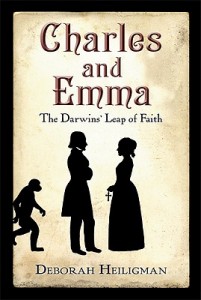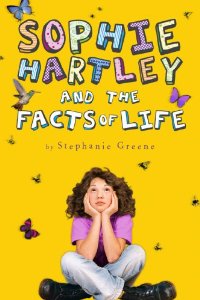The Boy Who Loved Math: The Improbable Life of Paul Erdos by Deborah Heiligman, illustrated by LeUyen Pham (Roaring Brook Press, 2013)
As a young boy, he hated school and rules, couldn’t sit still, and turned everything in the world around him into a math game. Known as the Magician from Budapest by the age of twenty because of his extraordinary math skills, Paul Erdos was a man whose passion and generosity made him beloved of mathematicians around the world. This lively account of the life of one of the world’s foremost mathematicians (to say nothing of characters) brings the sometimes remote, staid, black&white world of math to colorful life with enough verve and vigor to make math a fun subject for the youngest readers. ReaderKidZ spoke with author Deborah Heiligman about her own life’s journey that made this subject so important to her.
ReaderKidZ: You say that THE BOY WHO LOVED MATH was inspired by your two sons, who were excited upon learning about the lives of famous mathematicians. Also, that you had enjoyed math until the day came when you thought it was “for other people.” Are you referring to the glass ceiling idea that women are not as capable in the field of mathematics as men? Are there any famous female mathematicians?
DH: There are definitely female mathematicians. I’m sure not as many as males, though. One of Paul’s best friends was Ver Sos, who is still a working mathematician. She lives in Hungary. I do think, though, that when I was growing up girls were not particularly encouraged to pursue math. I doubt I would have been a mathematician considering how confusing I found calculus, but maybe with the right encouragement… you never know. I hope girls today are being encouraged, but I kind of think they are not. I wonder what your readers think.
ReaderKidZ: You portray Paul Erdos as a small boy who had a hard time sitting still and following rules. This continued after he went to school, so his mother allowed him to stay at home, a situation many young boys today would envy. Did your own sons have these problems and were they home schooled at any point?
DH: My older son did leave school after 9th grade! We fought him on it for about a year and a half, but he finally won. He thanks us to this day for letting him. He went on to the University of Chicago and still thinks it was the right thing to do.
ReaderKidZ: You obviously did a tremendous amount of research in order to write this. How were you able to select what you considered the most important milestones in Edros’s life and profession for mention in your book? Why did you choose the picture book genre?
DH: It was kind of crazy to do Paul Erdos as a picture book, but I really never thought of it any other way. It took me many many drafts to get to the core of the story. I left a lot on the cutting room floor. But once I had the core the book started to flow. Some of the choices were easy (leaving out his amphetamine use, for example). Others were hard (leaving out his father).
ReaderKidZ: You sure lucked-out with your illustrator! LeUyen Pham’s illustrations are wonderful, and her end notes (and yours) are fascinating. She put so many Erdos-specific details and math-related references into every illustration. Did you two talk to one another about the book and your visions for it, or were you as surprised as any reader when you saw what she’d created?
DH: LeUyen and I were not in contact until the last stages—when I saw sketches. When I first saw the sketches I was bowled over! It was as if she had looked inside my brain, saw what I wished she would include, and then made the pictures a zillion times better than I could have imagined them.
ReaderKidZ: In the same way that you fictionalized the life of the Darwins in a middle grade novel (Charles and Emma: The Darwin’s Leap of Faith), when can we hope to read your middle grade version of the life of Paul Erdos?
DH: Guess what? That’s not fiction! Everything in that book is true! It’s what some people call a nonfiction novel, but there’s not a thing made up. I have no plans to do anything else on Paul Erdos. Unless Hollywood comes calling. Or Broadway.
ReaderKidZ: The Erdos Number concept is a bit like seven degrees of separation. To what do you attribute his tremendous popularity when most mathematicians are reputed to be solitary people?
DH: He really loved his friends, his friends loved him, and he really enjoyed doing math with other people. Once I was interviewing one of his best friends and after a while Joel said to me, “It’s hard to talk about Paul in anything other than religious terms.” This from a mathematician! They all just loved him, and still do! Even those mathematicians who never met him!
ReaderKidZ: When attempting to write about any famous character in history, the author must pick and choose which events to portray, what portion of their subject’s life to focus on, and how deeply to go into details. What advice would you give to any writer – young or old – who wants to write about someone famous?
DH: I would say: do a lot of research, and then give your readers YOUR take on the famous person. Have the courage to show them the person as you see her (or him). I’m telling myself that right now with my current project!
ReaderKidZ: For more about Paul Erdos and The Boy Who Loved Math, check out Deborah’s website HERE.













